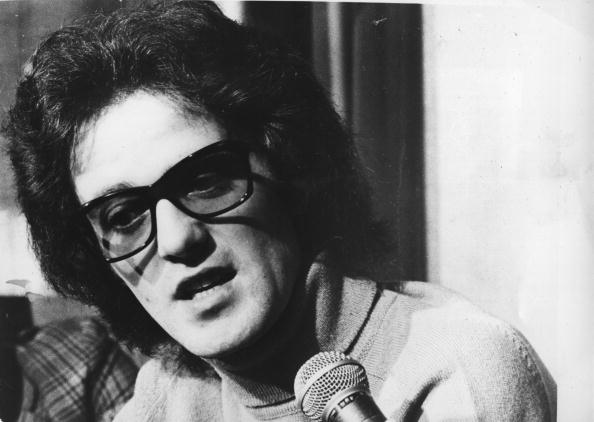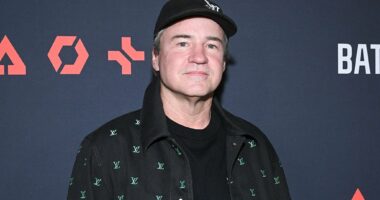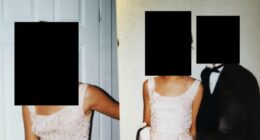Share this @internewscast.com
What is Gilbert O’Sullivan’s Net Worth?
Gilbert O’Sullivan, an acclaimed Irish singer-songwriter, boasts a net worth of $20 million. He rose to prominence in the early 1970s, captivating audiences with hits like “Nothing Rhymed,” “Alone Again (Naturally),” “Clair,” and “Get Down.” O’Sullivan’s talent has earned him three Ivor Novello Awards, including the prestigious Songwriter of the Year in 1973.
Early Life and Education
Born Raymond O’Sullivan on December 1, 1946, in Waterford, Ireland, he was one of six children. His mother managed a candy shop, while his father worked as a butcher. The family relocated to England when O’Sullivan was seven, first settling in London before moving to Swindon. It was there he began learning piano. He attended St. Joseph’s Catholic College and Swindon College, where he joined several bands like the Doodles, the Prefects, and Rick’s Blues. O’Sullivan expanded his musical skills by learning the drums and began to compose his own songs.
Rise to Fame
In 1967, O’Sullivan ventured to London aiming to kickstart his recording career. To distinguish himself, he adopted a unique persona with a bowl haircut, cloth cap, and trousers reminiscent of a Depression-era street urchin. His determination paid off when he secured a five-year deal with CBS Records’ April Music. Despite early struggles with unsuccessful singles such as “Disappear” and “What Can I Do,” he switched to the Irish label Major Minor Records. Persisting, he sent demos to manager Gordon Mills and joined Mills’s new label, MAM Records. His breakthrough came in 1970 with “Nothing Rhymed,” a hit that soared to number eight on the UK charts and topped charts in Ireland and the Netherlands. This track was part of his debut album, “Himself,” released in 1971, which garnered both strong sales and positive reviews. That year, he also enjoyed success with singles like “Underneath the Blanket Go,” “We Will,” and “No Matter How I Try.”
O’Sullivan achieved global stardom in 1972 with “Alone Again (Naturally),” a poignant ballad about suicide and loss. The song topped the Billboard Hot 100 in the United States for six weeks and received Grammy nominations for Song of the Year and Record of the Year. With this newfound fame, O’Sullivan revamped his image to a more collegiate style, donning a sweater emblazoned with a large “G.” That year, he also released “Clair,” another international hit and his first UK number-one single, featured on the chart-topping album “Back to Front.” Selling over ten million records in 1972, O’Sullivan was at the pinnacle of his career. He explored new musical directions with his third album, “I’m a Writer, Not a Fighter,” in 1973, which featured the rock and funk-influenced hit “Get Down.”

Keystone/Getty Images
Further Career
By 1974, with his fourth album, “A Stranger in My Own Back Yard,” O’Sullivan’s commercial success began to wane. The album failed to break into the UK top five, and its lead single, “A Woman’s Place,” faced criticism for perceived sexism. He scored his last two hits of the era with “Christmas Song” in late 1974 and “I Don’t Love You But I Think I Like You” in mid-1975. After his 1977 album “Southpaw,” a dispute over an unfair contract with MAM led to a lengthy legal battle. Although he won, it derailed his career. In 1980, he rejoined CBS Records and found moderate success with “What’s in a Kiss?” Following albums “Off Centre” and “Life & Rhymes,” O’Sullivan took a break from music between 1983 and 1986, returning in 1989 with “In the Key of G.” The 1990s and beyond saw him regain momentum, especially in Japan, culminating in his 20th studio album, “Driven,” released in 2022.
Grand Upright Music, Ltd v. Warner Bros. Records Inc.
In 1991, O’Sullivan made headlines by suing rapper Biz Markie for using a sample from “Alone Again (Naturally)” without permission. The United States District Court for the Southern District of New York ruled in O’Sullivan’s favor, awarding him full royalties. This case set a precedent in the music industry, mandating artists to secure approval for sampling other musicians’ work.
Personal Life
In early 1980, O’Sullivan married his Norwegian girlfriend Aase Brekke. Together, they have two daughters named Helen-Marie and Tara.
All net worths are calculated using data drawn from public sources. When provided, we also incorporate private tips and feedback received from the celebrities or their representatives. While we work diligently to ensure that our numbers are as accurate as possible, unless otherwise indicated they are only estimates. We welcome all corrections and feedback using the button below.
(function() {
var _fbq = window._fbq || (window._fbq = []);
if (!_fbq.loaded) {
var fbds = document.createElement(‘script’);
fbds.async = true;
fbds.src=”
var s = document.getElementsByTagName(‘script’)[0];
s.parentNode.insertBefore(fbds, s);
_fbq.loaded = true;
}
_fbq.push([‘addPixelId’, ‘1471602713096627’]);
})();
window._fbq = window._fbq || [];
window._fbq.push([‘track’, ‘PixelInitialized’, {}]);







